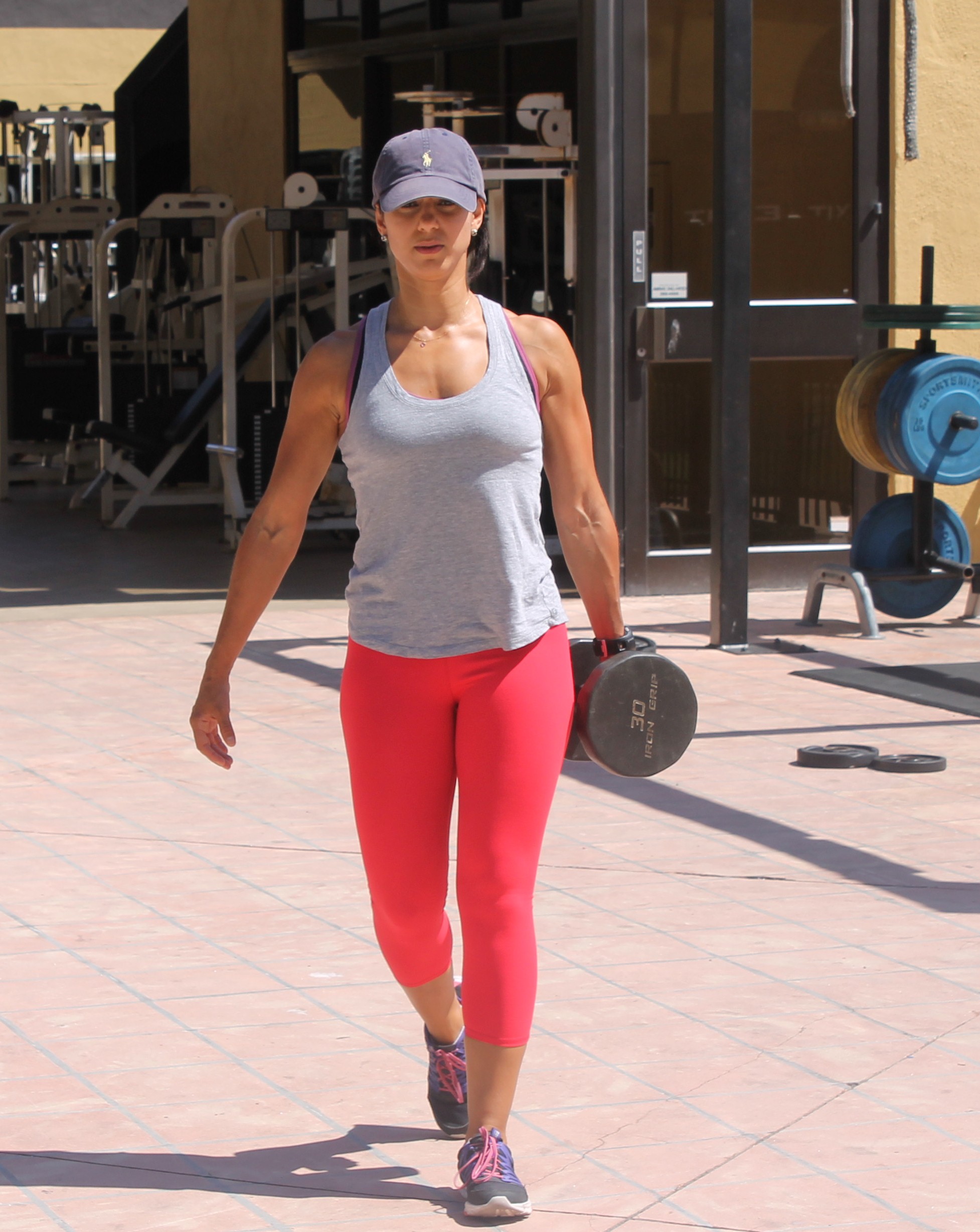Enough with the crunches and planks, friends. It’s time we get smarter about how we train our core musculature. Nearly every client or student I meet tells me they have weak abs (their words, not mine), and when I ask how they’re currently training their core, they sound off on a long list of crunch variations.
Look, I’m not one to hate on anyone’s goal of sexifying their abs for aesthetics alone, but if you’re doing the same ab routine you did in college and seeing zero results, it’s time to rethink your approach.
First, nutrition trumps all in seeing visible abs. Second, doing more effective exercises that attack all the muscles in the core is going to build that muscle up so they actually show up once you’ve cleaned up the diet front.
Core 101
The “core” is your transverses abdominis, internal and external obliques, the rectus abdominis, erector spine, multifidius and pelvic floor muscles. Bet you think about half of those when you choose your abdominal exercises, don’t you?
In Pilates we refer to this area as the “powerhouse”. In strength worlds we just call it the “core”. In more simplistic circles, all these muscles are referred to as “abs”. Training this area for static and dynamic stability ensures you prevent injury, can transfer force through the core muscles, and of course, provide support for standing. Clearly, traditional core exercises don’t address those areas because well, it doesn’t sound sexy. No one trains abs thinking “Wow, I really want to make sure I’m strong enough to stand.”
But that’s exactly what we should be doing! You can still make your stomach look good but if it’s not functional for every day life then you’r wasting time. Work your core smarter and harder with these super effective alternatives to traditional crunches and sit-ups.
Five Core Training Alternatives
Banded woodchop
The woodchop is an underrated exercise with loads of benefits and it’s shame people don’t spend a bit more time with it. Those of us who live in the saggital plane should use this exercise purely for the 2-for-1 special: anti-extension and rotation. I dig this exercise for every level as it can be progressed or regressed to fit with any one’s goals.
The video below demonstrates a standing variation with a resistance band and is featured in my new Strong Body Fitness program (stay tuned for that!). I don’t always have a cable machine available (and that is in option with this exercise too), so a band is an excellent option. My clients eventually progress from standing to 1/2 kneeling, kneeling, and split stance variations, which challenges the stability further once this version becomes too easy. The only way to really screw this exercise up is to move through the exercise too quickly, overcompensate with the hips, or over/under load the exercise with the cable machine. I’m sure there are other ways but those are usually the big ones that I see.
https://vimeo.com/256494902
Pallof press
Since we’re on the resistance band train, the Pallof press is another great anti-rotation exercise that packs a powerful punch in the most subtle way possible. It’s really tough to butcher this exercise and thankfully works for just about every single body type unless you’re T-Rex….the short hand thing would be a bit of problem.
Again, this one can be used with a band or cable (I prefer cable machine when it’s available) and can be done in standing, 1/2 kneeling and tall kneeling variations to increase the difficulty of the exercise, challenge hip and pelvic stability (in the 1/2 kneeling versions) and overall core tension.
Loaded carries
Nothing makes me want to cry more than when I do a variation of a loaded carry. Everything about it is surprisingly difficult, like the Pallof press. There is so much versatility in this exercise and is incredibly effective for any day of core training. The versions I use most with myself and clients can be found in this article I wrote below.
Core training with loaded carries
The most important things to remember about using carries is that
a) it’s a loaded carry, meaning you have to use some weight that’s actually challenging enough to hold but not so heavy you can barely take five steps;
b) going too fast. These days I make my clients (and myself) walk at a glacial pace, sometimes walking with my Gandalf cane in front of them so they can’t go past me (Lord of the Rings is my jam, ya heard?) This is not a fast or lazy exercise. Treat it with some respect.
Side plank with row
This one appeared a few weeks ago on my blog but it’s worth another mention. Here you get anti-rotation, anti-extension, AND a freaking row, making it awfully dynamic and challenging. Sometimes I throw it into a warm-up or into the workout finisher, depending on the focus of the day. Yet it never ceases to amaze me how difficult this exercise is despite it’s simplicity.
Double racked kettebell squats
Yes, this is a lower body strength exercise disguised as a core exercise, and here’s why. Do this correctly with the right amount of load and you’ll feel your core light up like a Christmas tree. Unlike the barbell front squat, which is superior as far as front squats go, it’s still a predominantly lower body exercise. But with the two sinister kettlebells, your anterior core kicks into overdrive to hold yourself upright and stabilize the movement without the lats. Sure, it’s not a crunch, but it’s a lot better than planking your way into boredom. Can you use dumbbells? Yes, but it will not have the same effect as using kettlebells will simply due to the nature of the rack position.

To be clear, this is not a beginner-friendly exercise. In fact, there’s a lot of technique mishaps that can make this a useless exercise, so before you get into it, be sure you
- Have spent QT grooving the squat pattern
- Know how to hold kettlebells in the rack position (i.e. no broken wrists, flared elbows, etc.), and;
- Understand that this is not your moment to PR. You won’t be able to load this as much as barbell front squat and it’s not that important that you do. Focus on the quality of the movement overall.
Closing thoughts
If your goal is to have an enviable stomach remember that abs are built in the gym and revealed through good nutrition. If your goal is to improve your general wellbeing in terms of how you move, perform or just want to get plain strong, these 5 exercises will take you there.
Keep in mind that this article is not hating on your regular ab routine of crunches. If you love them, do them. However, there is a better way to achieve your ab goals, which includes mastering the nutrition side of things (that is how you reveal abs anyway). Some of my clients want to have a set of crunches thrown into the mix just to feel like they’re working out their abs. In those cases, yes we’ll do some variation of russian twists, starfish crunches, leg lifts, ball passes, etc. But know what you’re signing up for, and that there are better ways to train your core and get a strong, healthy body that does whatever the heck you want it to do in real life.

